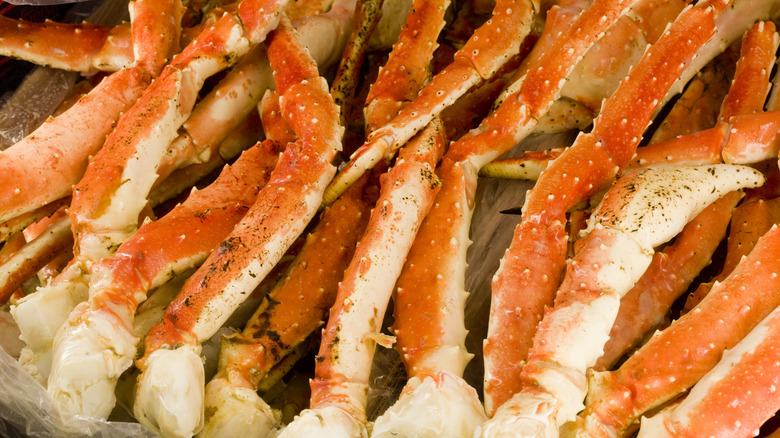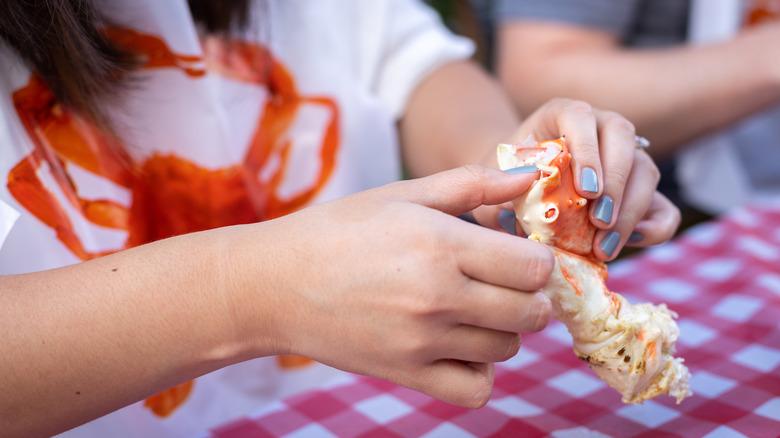How To Clean Crab Legs After You Boil Them
Crabs, a delightful delicacy from the ocean, are renowned for their sweet and succulent meat encased within formidable shells. However, the joy of indulging in this seafood delight often comes with a challenge: Effectively cleaning the crab legs without damaging the delicate meat or encountering unwanted shell fragments.
Cleaning crab legs after they are boiled requires precision and a delicate touch to ensure that the sweet, tender meat remains intact while freeing it from its protective shell. The process begins by acknowledging the crab's anatomy — the legs are attached to the body at joints, which is where our focus should lie. To maintain the integrity of the meat, it is crucial to twist the legs away from the body at the joint, ensuring clean separation without harming the delicate interior. It goes without saying that working with the crab should only be done after the crab has had time to cool enough to comfortably handle. If need be, a kitchen towel or oven mitt can be employed to insulate your hand.
By embracing this technique of twisting the legs away from the body, you minimize the risk of damaging the meat and introducing unwanted shell fragments. Patience and care in this step will set the stage for a rewarding culinary experience, allowing you to fully enjoy the delicious crab meat without any unwanted surprises.
How to extract crab leg meat
Once the crab legs are successfully separated from the body, the next step is to extract the meat efficiently. Breaking the legs further at the joints into smaller, more manageable sections is a common approach. The strategy for extracting the meat can vary based on the type and size of the crab. For smaller crabs, specialized tools called crab crackers and picks come in handy.
Crab crackers are utilized to gently break the shell, allowing you to carefully access the sweet crab meat without causing any harm. By positioning the leg in the crab cracker and applying just the right amount of pressure, you can crack the shell with precision, yielding delightful portions of unscathed crab meat. The crab pick does just what its name implies, allowing you to pick every last bit of meat out of spaces too small for your fingers.
On the other hand, the leg segments of larger king and snow crabs require a different approach. Kitchen shears prove to be an invaluable tool in such cases. Snipping a seam up the middle of the shell with the shears enables easy opening. Additionally, there's an efficient method involving snipping off the end of a king or snow crab leg segment through the use of kitchen shears. This allows you to tap out the meat in one seamless piece, which adds convenience to your dining experience.

